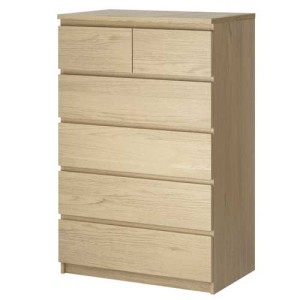Shifting CPSC Recall Landscape? Agency Announces Major “Repair Program” that is not Labeled a “Recall”
 Yesterday the CPSC and major furniture company IKEA jointly announced a “repair program” to address the serious and complex hazard of furniture tip over posed by 27 million chests and dressers sold by the company. The repair program offers free wall anchoring repair kits so consumers can secure the chests and dressers to the wall to reduce the likelihood of a tip-over incident (more background on furniture tip over and wall-anchoring here).
Yesterday the CPSC and major furniture company IKEA jointly announced a “repair program” to address the serious and complex hazard of furniture tip over posed by 27 million chests and dressers sold by the company. The repair program offers free wall anchoring repair kits so consumers can secure the chests and dressers to the wall to reduce the likelihood of a tip-over incident (more background on furniture tip over and wall-anchoring here).
If you weren’t looking for it, then you could have easily missed that the announcement did not contain the word “recall.” Nor was it included in the CPSC’s recall announcement list (though it is currently listed as a “recall” on saferproducts.gov).
So why is this significant?
The fact that many people probably didn’t catch the fact that the corrective action was not called a "recall" goes right to the core of an argument made by the regulated community over the past few years: not every voluntary corrective action must or should be called a “recall.” For example, there may be important safety actions and programs undertaken that may not be strictly required under the law but nonetheless are in the public interest. Even legally required actions are often not strictly a “recall” but another form of corrective action—such as a repair.
In 2013, however, the CPSC proposed to formalize its practice of insisting that every “corrective action” should be labeled a “recall.” Since that time, and for a number of years prior, every corrective action publicized by the agency has, in fact, been labeled a recall. In explaining the rationale behind the proposal to formalize this practice in the controversial “voluntary recalls” rulemaking, the agency stated:
“[A] voluntary recall notice should include the word ‘recall’ in the heading and text. For many years, the Commission staff's Recall Handbook has directed firms to use the term ‘recall’ in the heading and text. The word ‘recall’ draws media and consumer attention to the notice and to the information contained in the notice. In addition, use of the term ‘recall’ draws attention to the notice more effectively than omitting the term or using an alternative term. A recall notice must be read to be effective. Drawing attention to the notice through the use of the word ‘recall’ increases the likelihood that the notice will be read and will help effectuate the purposes of the CPSA and Consumer Product Safety Improvement Act.”
Following yesterday’s “repair program” corrective action announcement, the Today Show, the New York Times, the Washington Post, USA Today, ABC News, the Associated Press, CNN, and (according to Google) nearly 700 other local, regional, national, and international media outlets carried some version of the announcement alerting consumers to the repair program.
Although some of those news organizations incorrectly labeled the corrective action a recall—and it can’t be known at this time how many consumers will obtain free repair kits in response to the announcement—it’s fair to say that the message doesn’t appear to have been diluted based on the fact that it was called a “repair program” rather than a “recall.” And while some may say that this corrective action is an exception due to the high profile of the company involved and the number of units affected, it could just as easily be said that this corrective action demonstrates that media attention and consumer response is directly related to the characteristics of each individual corrective action itself and not necessarily what the corrective action is labeled.
It remains to be seen how and if the CPSC will soften its policy regarding the labeling of corrective actions or whether this repair program is a not-to-be-repeated exception for reasons only the CPSC and the company will ever know. At the very least though, it does offer hope to companies that there are at least some situations in which the CPSC can be persuaded that a corrective action should not be labeled a recall.
Update (July 24, 2015): Saferproducts.gov no longer lists this corrective action as a "recall."
